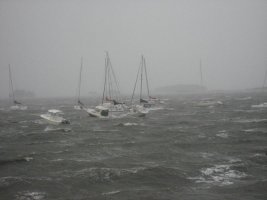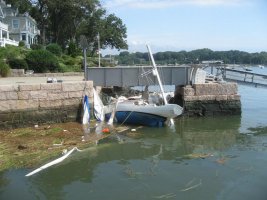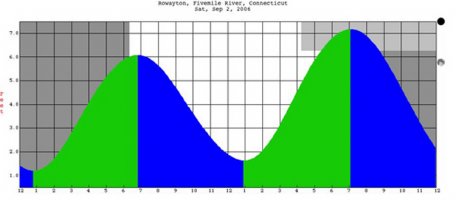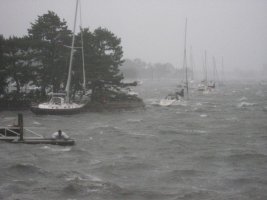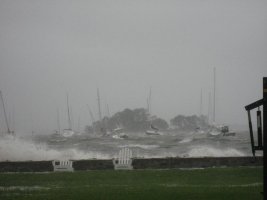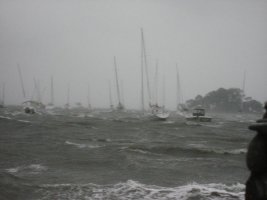Geoff Johnson
Fellow Ericson Owner
On Saturday (September 2), NOAA severely underestimated the effects of Tropical Storm Ernesto and we experienced sustained winds of 50 to 60 mph with gusts to 80 in Rowayton (Norwalk), CT. I attach a photo of my boat (the white one in the middle next to the green and beige power boat, which it hit when my mooring dragged). The damage (trashed stanchion and rub rail and minor gelcoat damage) was surprisingly slight given the conditions and the collision - several boats were washed ashore and totaled and many power boats flipped.
However, proper repair of the gelcoat may require removal of the toerail track which looks like it will require major interior deconstruction.
I was a little shocked to see how much my boat hobby horsed in comparison with the other boats . . . must be the IOR design. I hate to say it, but I don't think I'd want to be on an Ericson in really bad conditions.
However, proper repair of the gelcoat may require removal of the toerail track which looks like it will require major interior deconstruction.
I was a little shocked to see how much my boat hobby horsed in comparison with the other boats . . . must be the IOR design. I hate to say it, but I don't think I'd want to be on an Ericson in really bad conditions.
Attachments
Last edited:

